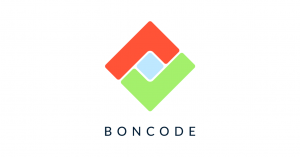Software development projects usually focus on two things: meeting deadlines and meeting requirements. The challenge comes when those requirements are poorly defined or unrelated to the quality of a software product. Deadlines are important, but so’s software quality.
Poor quality, unreliable software can hurt your brand, damage your reputation, and cost you customers. That’s why many companies – particularly those adding tech to an existing line-up of products and services – can benefit from a culture of quality.
Enjoy short-term gains, and avoid long-term pain
The management of software development takes many forms. In recent times, the Agile approach – breaking development into phases or sprints – is widespread and popular. It focuses on the delivery of small and frequent releases in response to user demand, as opposed to a single release of a complete software product.
The Agile approach has many business advantages, and the process of continuous integration and continuous delivery (CI/CD) incorporates Quality Assurance (QA). However, one major drawback is that it almost always focuses on meeting customer needs in the short term.
Like any corporate asset, software also needs to be maintained in the long term to maximize its value. The challenge facing software managers is how to bend this culture towards a long-term perspective, without damaging all the good practice that’s already in place.
Robust and reliable metrics around the long-term maintainability of your software can help. It’s not a revolution in your software development culture, but an evolution in maintainability – wrapping an extra layer of quality control over the top of your existing processes.
Empower conversations around quality at C-level
Chances are, your C-suite is not made up of software development experts. That can make it difficult for CTOs and software managers to convey what is and isn’t possible in terms of functionality and timescale. It can also hinder communication around what’s working well and what needs to improve in terms of quality.
Business leaders naturally push for what they (and their customers) want. Technical teams have to reply with a realistic picture of what’s possible and what level of quality is needed to ensure success both in the short term and the long term. BonCode’s unique platform gives everyone in your organization, actionable insights into software quality.
Quality depends on a number of factors including the expertise, size, and experience of development teams. Unsurprisingly, increased technical quality leads to better quality software but also improves productivity – in some cases making it 5 or 6 times faster.
A recent study with one of our clients revealed that the time to fix bugs was 2 to 3 times faster in high-quality software development than low-quality development. That’s one benefit that people at every level can appreciate and understand.
How to build a culture of software quality
Software is a corporate asset that needs to be protected in the short-term, medium term, and the long-term. If you want to build a culture of quality, it’s essential to share and agree on clear quality requirements. These take the form of SMART targets (Specific, Measurable, Attainable Realistic, and Timely).
When people understand what your quality requirements are, and whether they’ve met them, it’s much easier to build secure, reliable software for the long term. Source code analytics from BonCode can help you assess, measure, and improve quality, adding real value to your business.
Discover how BonCode can help you take control of software quality. Contact us





